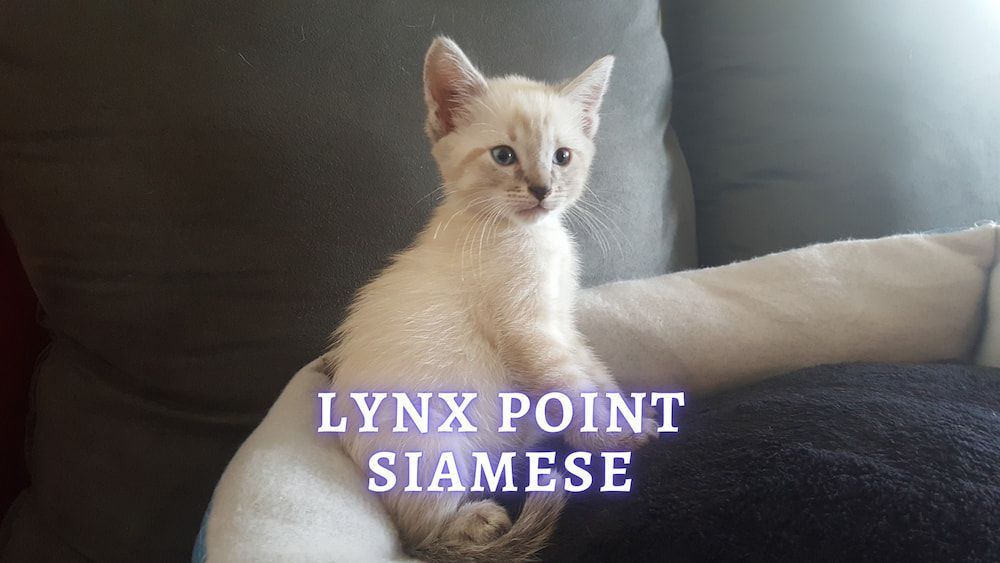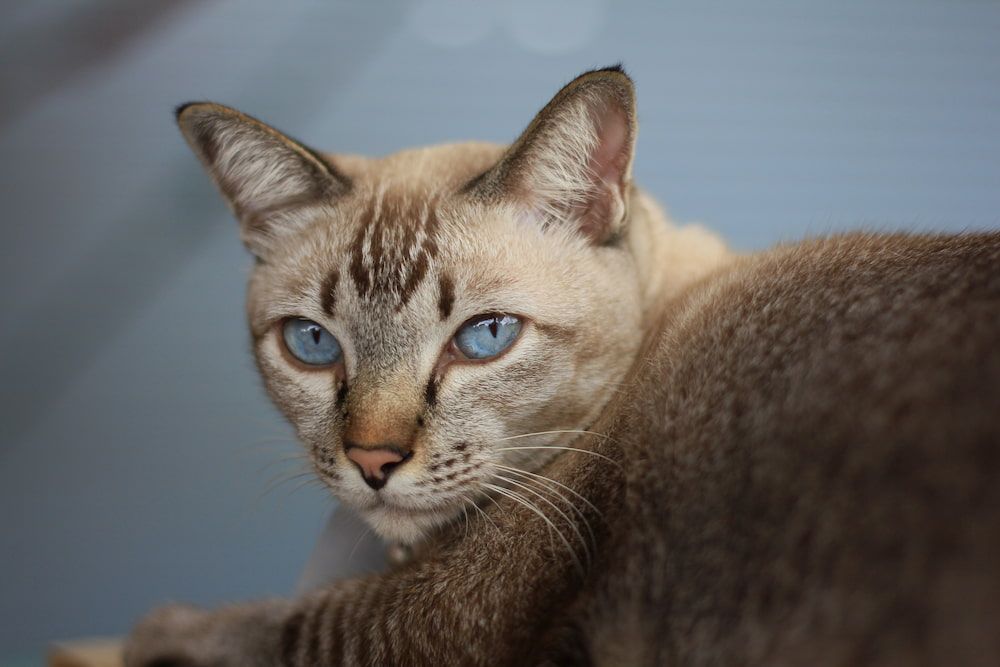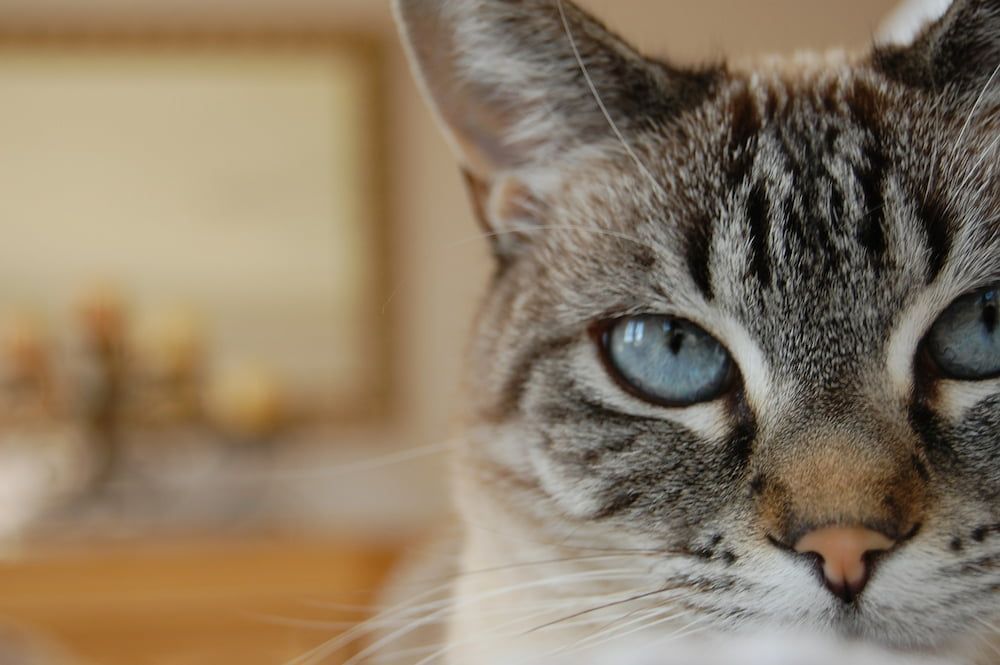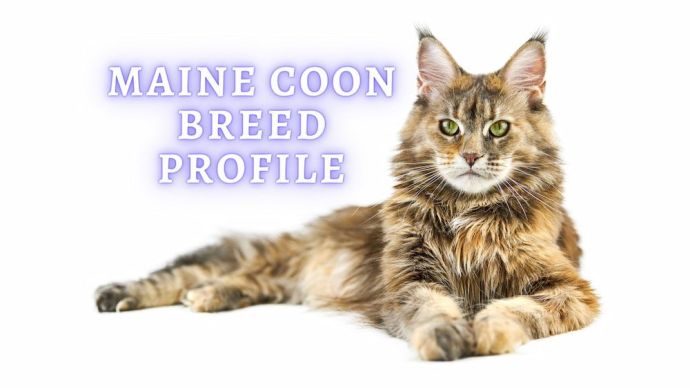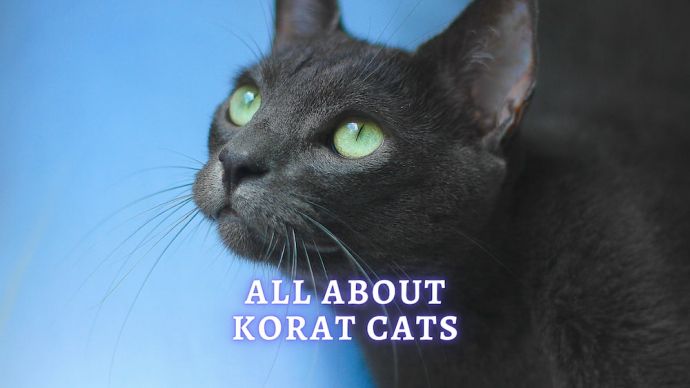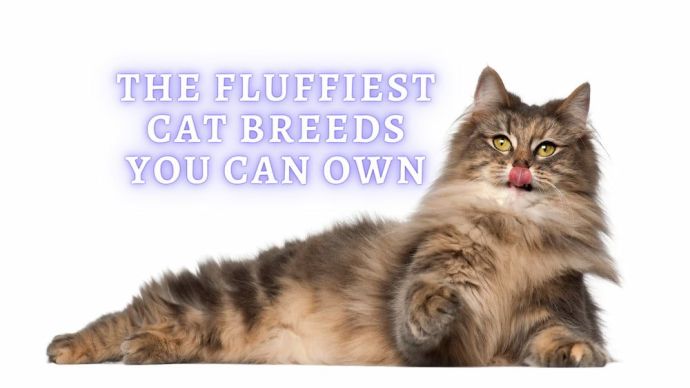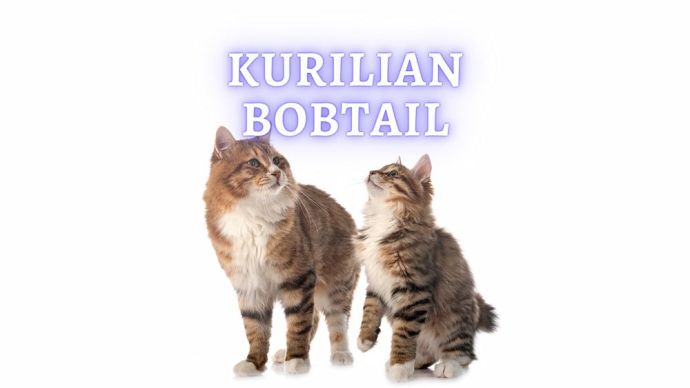Types of Siamese Cats: All About the Lynx Point Siamese
Written by:
Author: Carol Young
Carol has worked in specialty, emergency, mixed animal and general veterinary practices, and enjoys all aspects of veterinary medicine. Her special areas of interest include anesthesia, critical care, emergency, dentistry, internal medicine and small animal nutrition.
View all 62 articlesLearn about our editorial process and veterinary review board.
Viewed: 676
Updated on: 03/07/2023
Of all the cat breeds, the Siamese is known for its chatty nature and affectionate personality and has become quite a popular breed in both the US and other parts of the globe. The origin of this breed is traced back to Southeast Asia and Thailand, and since then, breeders have developed several different varieties of the Siamese, including the Lynx Point Siamese.
What is the Lynx Point Siamese Cat?
The Lynx Point Siamese (also known as the colorpoint shorthair) is a cross between a short-haired tabby domestic tabby cat and a seal point Siamese cat. Tabby cats are known for their stripes and m-shaped markings on their foreheads, and seal point Siamese cats have a cream-colored body with seal-brown or dark brown color points on their faces that fan out from their noses, ears, and extremities. What makes the Lynx Point Siamese unique is its color points of the Siamese cat and the striped pattern of a tabby cat: It looks like a Siamese cat with a tabby head, legs, and tail.
How are They Different from Traditional Siamese cats?
The traditional Siamese was derived from the Wichianmat landrace cat, also known as the Thai cat, and is one of several kinds of cats native to Thailand. The main difference between the Lynx Point and the traditional Siamese is the color and stripes. Although both varieties have the same sleek body and short hair coat, the Lynx Point comes in more colors than the traditional Siamese, such as seal, blue, chocolate, and apricot. The most distinct difference is the Lynx’s stripped, tabby-like coat pattern which includes rings of color that extend from the face, and legs, all the way to the tail.
History of the Lynx Point Siamese
The Lynx Point Siamese is not a particularly old breed and was first noted in the 1940s when a Seal Point Siamese was mated to a tabby cat. It got its name from its striped coat patterns, which liken it to the wild lynx. The variety didn’t gain popularity until the 1960s when breeders noted that it was more friendly and sociable than the traditional Siamese, yet retaining the popularly sought-after Siamese color point pattern.
The breed soon became so popular because it is considered friendlier and more sociable than its Siamese cousin but has the Siamese color point pattern. This point pattern is a form of albinism that causes cats to have more color on the cooler parts of the body (the tail, face, and paws) while the warmer parts of the body remain mostly white or a solid color. This point pattern is quite rare, and only a few breeds have the gene for it. The tabby cat genes allow for a calico tortoiseshell color point pattern, which is extremely rare and highly sought after in the Lynx Point.
The breed is currently recognized by the Cat Fancier’s Association, which refers to the breed as the Lynx Color Point Shorthair. The British Governing Council of the Cat Fancy also recognizes the breed, referring to it as the Tabby Point Siamese.
Interesting Facts
- The Lynx Point Siamese cats are typically smaller than other breeds and rarely top more than 12 pounds.
- The Lynx Point is said to be more sociable and friendly than most traditional Siamese cats.
- Because of their social nature, they are a good choice of cat for homes with children and other pets.
- The Lynx Point is said to be an accidental breed when a Siamese cat mated with a tabby cat.
- They will always have stripes on their legs and tail and the signature tabby M-shaped pattern on their forehead.
- As a mixed breed, the Lynx Point is said to have fewer health problems than purebred cats.
- Lynx Points are nick-named Tabby points or Color Point Short Hairs.
- The Lynx Point can be as chatty as the traditional Siamese but is considered to be less high-strung and more playful than its cousin.
- They are considered hypoallergenic. They shed little and produce a lower amount of Fel D1, a common feline allergen.
- Most Lynx Points are born white and do not develop their stripes until they are 6-8 weeks old.
- Lynx Point cats are likened to the wild Lynx or bobcats because of their striped face, legs, and tail.
- They almost always have blue eyes.
Characteristics and Appearance of Lynx Point Siamese
The Lynx Point has a very similar body type as the traditional Siamese, sporting a slim but smaller yet more sturdy, muscular build. Lynx Points typically weigh from 6-12 pounds, and as with other cat breeds, males tend to be larger than females.
The Lynx Point is just as agile and athletic as the traditional Siamese, but its tabby-like coat patterns and colors give it its special appearance. The Lynx Siamese has well-defined stripes around the legs, eyes, and face, and the tail can have various color rings extending to the tip of the tail. The hair coat color can be similar to the Siamese breed, but unlike its traditional cousin, the Lynx comes in a variety of colors, such as cinnamon, apricot, blue, red, caramel, lilac, seal, and chocolate.
The Lynx Point also has the distinct tabby-like “M” shaped marking on the forehead, along with spotted whisker pads and ears outlined with the color of the stripes found on the rest of the body.
Personality and Intelligence
The Lynx Point shares some of the same personality traits and intelligence with its Siamese cousin but is typically not as vocal and elusive. What sets the Lynx Point apart is its friendly and sociable nature. They are also loyal, affectionate, and love to play with their humans and other pets.
The Lynx Point is very active and adventurous and loves to explore her environment and surroundings. As a breed, the Lynx Point is very smart and can learn to perform tasks and tricks very easily. The Lynx Point Siamese is an excellent companion for adults and children and gets along great with other pets, including dogs.
The Lynx Point is a very social and people-friendly breed, and as a result, it does not do well when left alone for long periods. If you are thinking of getting a Lynx Point cat but work long hours away from home, you may want to reconsider or think about getting two cats or another pet to keep your feline friend company while you’re away.
In addition to their friendly and cuddly nature, the Lynx Point is also quite smart. These cats can be trained to perform such tasks as playing fetching or doing tricks and respond best to positive reinforcement. Speaking to these cats in a gentle tone and providing plenty of praise and treats helps to reward positive behaviors and tasks.
Care
Food and Diet
As with all cats, providing a diet rich in necessary nutrients is essential to maintain the health and welfare of this breed. As cats are true carnivores and need more protein in their diets than dogs (omnivores), they need certain elements and amino acids that can only be provided by animal protein. One of these essential amino acids is taurine, found exclusively in animal-based proteins. Taurine is critical for normal vision, heart function, immune system function, and digestion.
Like humans and other animals, cats have a fairly simple stomach anatomy, so once the stomach is filled with food, it takes a few hours for the food to move into the small intestine. Typically the stomach is empty between 8-10 hours, at which time the empty stomach sends signals that it’s empty and time to eat again: This is called the hunger response. So, when considering how often to feed your cat, provide at least two meals per day.
Although most cat owners offer a “free-feed” routine, this can contribute to overeating and obesity. Providing regular, routine feeding times can help prevent obesity in your cat and can allow your cat’s body to adjust to regular feeding times.
If you have questions about what to feed your Lynx Point, talk to your veterinarian. Your veterinarian is your best resource when considering what and how often to feed your cat.
Exercise
The Lynx Point may not be as active as its Siamese cousin, but the breed still does best with plenty of room to play and run and plenty of human interaction. Obesity in cats can be a problem with any breed, so it’s important to offer your cat plenty of opportunities to run, play and burn off excess energy.
If your cat likes the outdoors, consider getting a harness and taking her for a walk, or provide an outdoor exercise space such as a catio or an enclosed outdoor area that is safe for your cat. Interactive cat toys and puzzles can also help your feline pal get her “wiggles” out, or just playing a game of fetch can provide necessary exercise as well as strengthen the cat-human bond.
Training
Like the traditional Siamese, the Lynx Point is intelligent and can be trained to do several tasks and tricks. Cat training is a great way to connect with your cat and even teach them what certain words mean. The key to cat training is to choose tasks that already come naturally to your cat, for example, chasing a small object, such as a stuffed mouse, or jumping up on things.
By using positive reinforcement techniques, you can teach your Lynx Point how to sit, stay, come, find a hidden treat, or jump up on a ledge or into a cat carrier. It’s important to keep training sessions short and positive, oftentimes less than five minutes at a time, and end each session with playtime, such as chasing a feather flyer or a stuffed toy, letting your cat carry the object away in for a victorious “win.”
Grooming
Since Lynx Points are considered a short-haired breed, they don’t need much grooming overall. To prevent the formation of mats, weekly brushing with a good grooming brush should be sufficient and can help remove any debris or excess hair. Since cats are naturally very clean machines, bathing is not necessary unless your cat has played in the mud or if her coat has become spoiled or dirty.
Health and Conditions
The Lynx Point is a mixed breed, and mixed breeds are considered to be somewhat healthier than pure breeds because pure breeds have a limited gene pool and tend to pass along genetic disorders from one generation to the next. They can live up to 20 years of age with proper health care and feeding.
As a mixed breed, the Lynx Point Siamese is considered a healthy cat breed, but that doesn’t mean it is immune to the more common health issues that many cats can face. Some health issues can include:
- Gingivitis and dental disease. Gingivitis is an inflammation of the gingiva or gums that can weaken the teeth if left without regular dental care.
- Stomatitis. This condition is also a dental issue and involves inflammation and redness of the oral mucosa in the mouth, which can lead to pain and difficulty eating and drinking. The cause of stomatitis in cats is unknown but is suspected to be caused by a hyperimmune (overreaction) response of the oral tissues to plaque and bacteria.
- Respiratory problems such as asthma or bronchitis. Like any cat breed, the Lynx Point can be susceptible to upper respiratory issues.
- Eye disorders such as progressive retinal atrophy. This condition is inherited and if untreated, can lead to partial or complete blindness.
- Urinary tract infections. Lynx Points and other breeds can be susceptible to urinary tract infections. If you notice that your cat is urinating more frequently, or has blood in her urine, contact your veterinarian the right way.
- Kidney disease. Older cats are prone to kidney or renal disease like many other breeds. The symptoms often include an increase in drinking and urination, as well as weight loss and inappetence. Regular veterinary checkups and bloodwork can help screen for this disease.
Regular veterinary checkups and keeping up to date on vaccines are essential to ensure the health and welfare of your Lynx Point, and your veterinarian can provide both guidance and recommendations regarding the care and health of your cat.
RELATED: Cat Chronic Kidney Disease (Vet Advice)
Conclusion
The Lynx Point Siamese is an intelligent, loyal, loving, and playful breed that can be an excellent addition to any family and home. If you want to add a Lynx Point to your family, you will be rewarded with years of fun, affection, and feline companionship. This breed is full of love and is happy to be included in any fun activity.
If you want to add a Lynx Point Siamese to your home, consider contacting a rescue or a shelter. There are many cats out there who need warm and loving homes.
FAQ
Are Lynx Point Cats Rare?
Compared to other breeds, the Lynx Point Siamese is not necessarily rare, but those with the tortoiseshell pattern are very rare and difficult to find. They can be purchased from breeders and rescues and can even be found in some shelters. If you want to purchase Lynx Point Siamese kittens from a breeder, you can expect to pay between $200-$400.
What is the difference between a lynx point Siamese and a Siamese tabby?
The Lynx Point Siamese cat is also known as the Tabby point Siamese in Britain, so the Lynx Point and the Siamese tabby are essentially the same as they are a crossbreed between a Siamese and a tabby. The Lynx Point is different from the traditional Siamese cat because it has tabby stripes, a smaller body, and a sturdier but slimmer frame.
What is the difference between seal point and lynx point?
A solid body color characterizes the Lynx Point Siamese with tabby markings around the face, legs, and tail. The Seal Point Siamese typically has a solid color body, with contrasting solid colors around the ears, paws, and tail. So the main difference is the stripes: Lynx Point cats have stripes, and Seal Points do not.
Are Lynx Point Cats Considered Siamese?
The Lynx Point Siamese is a colorpoint cat, a characteristic of Siamese, where the darker areas on the cat’s coat have a tabby striped pattern. This colorpoint pattern can be found in other cat breeds such as the Javanese Ragdoll, Himalayan, and British shorthair cats.
Although the Lynx has a colorpoint pattern, it doesn’t necessarily mean it’s a Siamese; however, its genetic roots are Siamese.
According to some cat associations, the lynx pattern is not recognized in official Siamese cats. The Cats Fanciers Association allows only four colors when it comes to a Siamese cat’s points: Chocolate, seal, lilac, and blue.
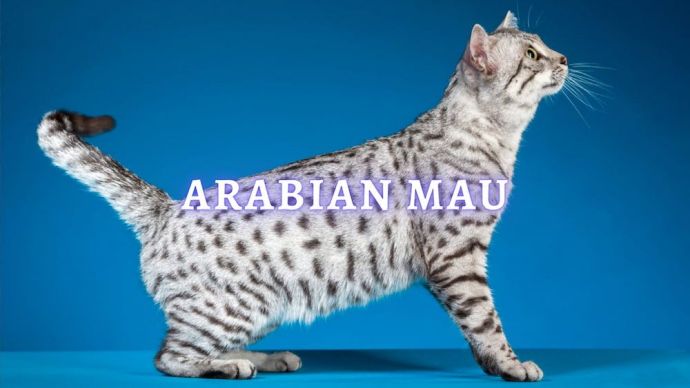 Cat Breeds Arabian Mau: History of Arabian Mau Cats, Personality, Care, Lifespan
Cat Breeds Arabian Mau: History of Arabian Mau Cats, Personality, Care, Lifespan - 1215
- 0
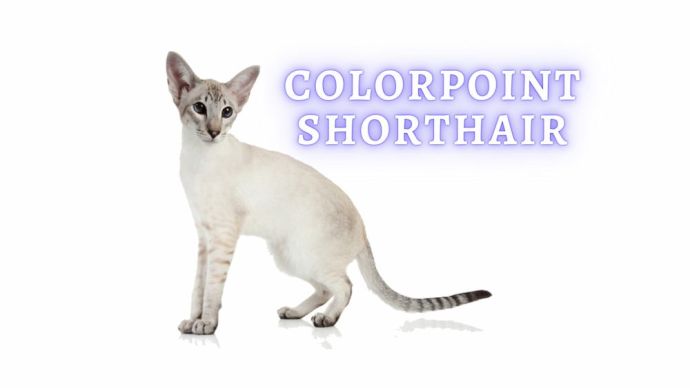 Cat Breeds Colorpoint Shorthair: Colorpoint Shorthair Cat Breed History, Temperament and Personality
Cat Breeds Colorpoint Shorthair: Colorpoint Shorthair Cat Breed History, Temperament and Personality - 252
- 0
 Cat Care Why Does My Cat Attack My Legs? 10 Reasons Why and What To Do About It (Vet-Approved Advice)
Cat Care Why Does My Cat Attack My Legs? 10 Reasons Why and What To Do About It (Vet-Approved Advice) - 46013
- 21
 Cat Veterinary Tips Cat Stomach Gurgling: Vet Advice on Why is Your Cat Stomach Gurgling?
Cat Veterinary Tips Cat Stomach Gurgling: Vet Advice on Why is Your Cat Stomach Gurgling? - 36469
- 4
 Cat Veterinary Tips My Cat Lost its Voice: Can Cats get Laryngitis? (Vet Advice)
Cat Veterinary Tips My Cat Lost its Voice: Can Cats get Laryngitis? (Vet Advice) - 23554
- 13









